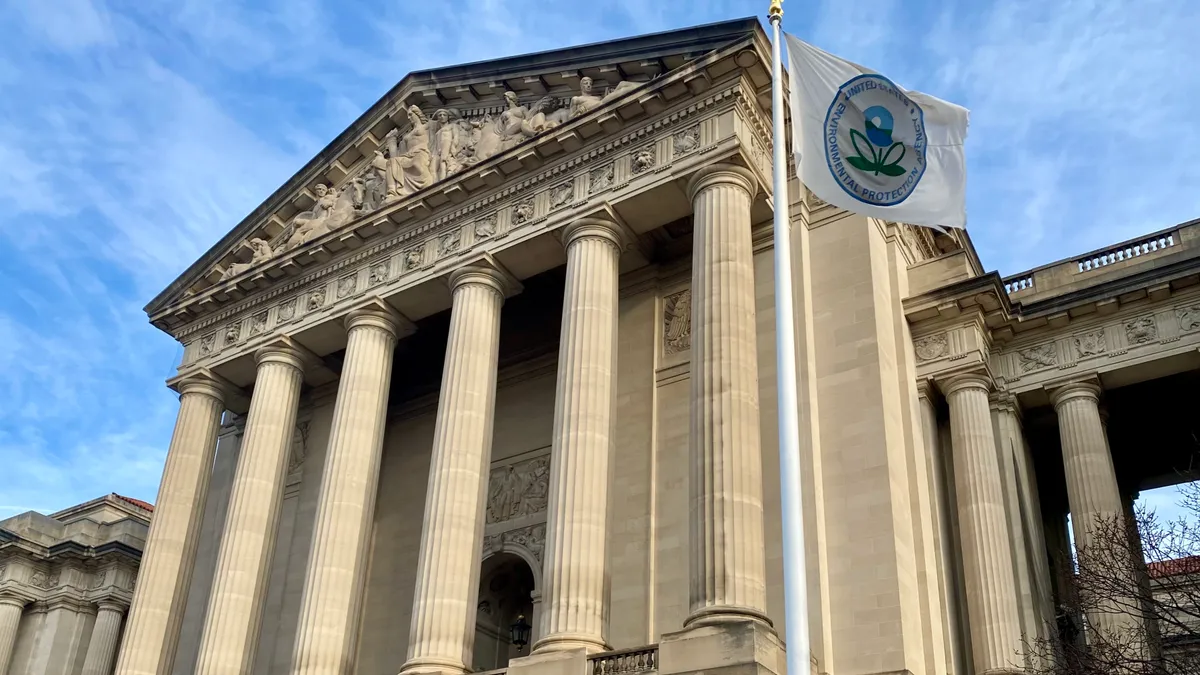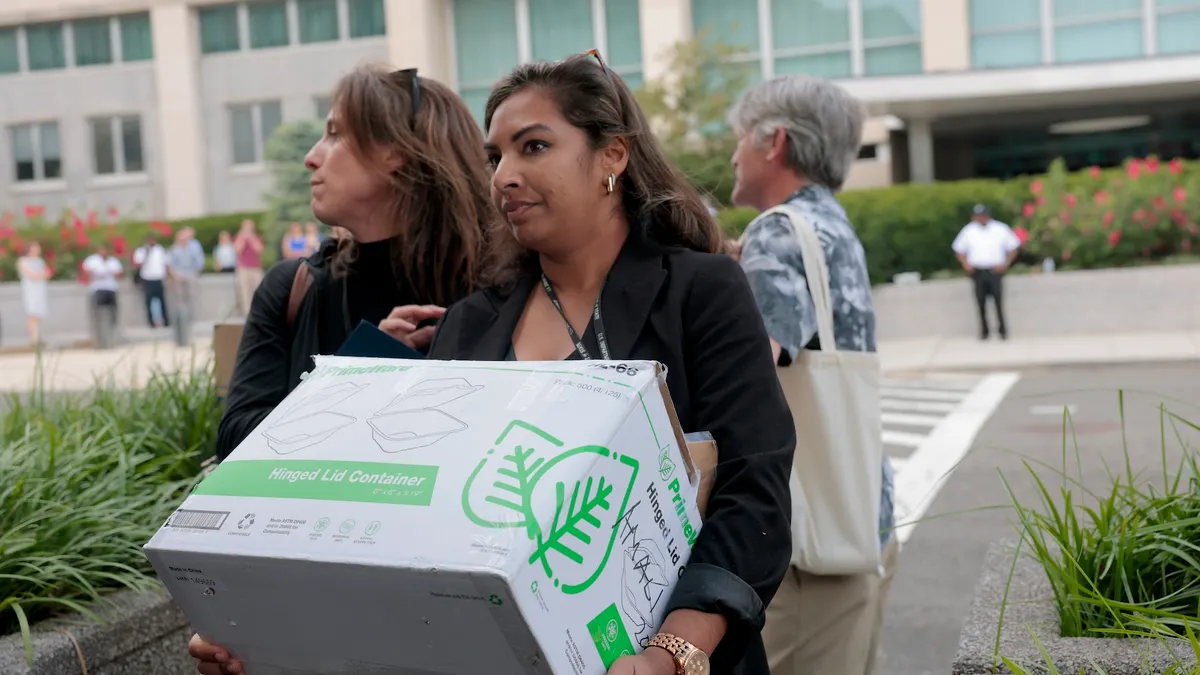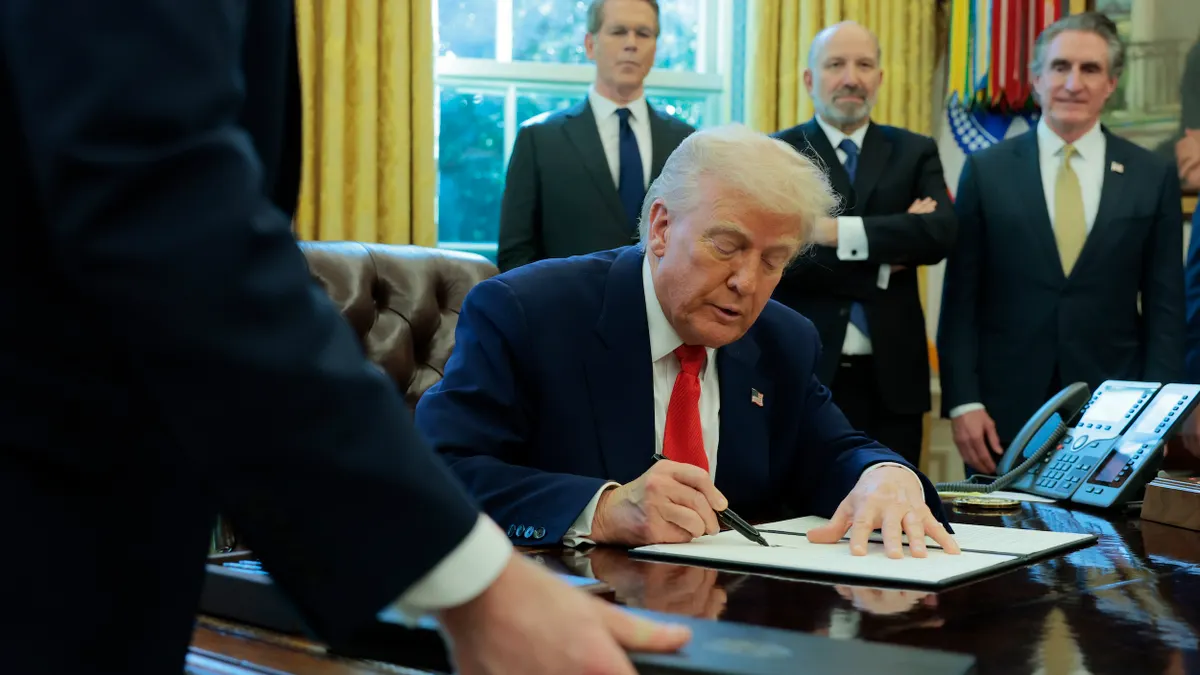Editor's note: This article was originally published in American City & County, which has merged with Smart Cities Dive to bring you expanded coverage of city innovation and local government. For the latest in smart city news, explore Smart Cities Dive or sign up for our newsletter.
Many American cities and counties are facing fiscal and economic threats that would make even “Mission Impossible”’s Ethan Hunt nervous. American Rescue Plan funding that buoyed local government budgets is expiring. Downtowns have not fully recovered from the remote-work revolution. The inflation spike of 2021-22 pushed costs up permanently. Wealth inequity, homelessness and other long-standing issues demand action, even as cuts to federal grants and expertise loom. Economists are warning of a higher chance of recession.
When it comes to tackling fiscal challenges, local leaders have no choice but to accept the mission, impossible though it may seem. Completing it does not require black ops-type tactics, but cities and counties will need to employ innovative (and perhaps unconventional) strategies, draw on lessons learned and engage with partners to succeed. What follows is a mission plan to achieve fiscal sustainability. Don’t worry — the message won’t self-destruct in five seconds.
Develop a multiyear financial plan. When the first step of a mission is to develop a plan, you might be in trouble, but a multiyear financial plan is the foundation of fiscal sustainability. It provides not just direction but also inspiration. As human beings, we are willing to endure painful growth to achieve a meaningful goal; think training for a marathon or learning to play a musical instrument. A plan that connects fiscal stewardship to community ambitions can serve as a rallying point when facing harsh realities and making hard choices.
Good financial planning can be viewed as having three core components. The first is well-informed projections of revenues and the costs of maintaining current service levels. The relationship between revenues and costs sets the stage for the ambitions and limitations of the planning process. Second is a set of goals grounded in an assessment of financial strengths, weaknesses, opportunities and threats. These might include achieving structural budget balance plus building schools, fixing streets or cutting taxes. Third is a robust set of options for achieving the goals. The options should be assessed for feasibility and impact to facilitate decision-making.
Enhance the value of government assets. Many governments underutilize assets due to a lack of inventory, valuation or monetization strategies. Analysis of real estate holdings, for example, can unlock significant one-time and recurring revenue by paving the way to a sale, swap, lease, development project, consolidation or other strategy. Thorough asset analysis — real estate holdings, uncollected taxes, advertising space, even tree waste — can unlock new revenue. Atlanta, for example, found that four scattered acres of city property in the downtown core had a combined market value of $100 million, far more than what appears on the books. One parcel near City Hall will soon become a 228-unit mixed-income housing development with ground floor retail. Asset optimization can help offset federal funding losses and sustain critical services.
Enhance service delivery. Governments continue to face labor shortages and record numbers of unfilled positions — offering a unique opportunity to rethink service efficiency. There may be a range of options for making services better, faster and cheaper. For instance, streamlining operations through methods such as lean process improvements can enhance service quality while freeing up funds. A coordinated effort that engages frontline employees as full partners in “straightening the pipes” of government can lead to practical, lasting improvements and help mitigate budget pressures.
Now may be the right time to test the market and find out if the private sector can more cost effectively collect trash, run health clinics, sweep streets, account for payables and receivables, etc. Vacancies may enable local governments to reassign employees displaced by outsourcing, minimizing disruption. Local governments can also follow the Indianapolis example of allowing labor unions to bid for contracted services and using gainsharing to reward employees for improving productivity.
Leverage outcomes to find new revenue. Addressing the root causes of societal problems can save money. That’s the basis of social impact bonds, also known as pay for success (PFS). Denver attracted $8.6 million in private investments to provide permanent supportive housing to 360 chronically unhoused individuals. An evaluation by the Urban Institute found that the program reduced jail, health and other costs enough to repay investors with a return. The same concept has been used in other places to increase pre-K slots, enhance prenatal nurse visits and reduce recidivism.
Check your tax expenditures. When Baltimore’s budget office studied the city’s development tax credit programs in 2022, it found many issues: The credits primarily benefited wealthier neighborhoods; they also over subsidized some development without controls on cost and eligibility, and they profited developers, who used them to increase the asking price of homes instead of passing them along to homeowners. Local governments that use tax credits or similar incentives should give them the same scrutiny as other expenditures.
Prioritize spending strategically. When faced with budget shortfalls, state and local governments often respond by implementing across-the-board cuts — thinning the soup, as it were. While this approach may seem equitable on the surface, it may have the unintended consequences of protecting lower-value programs and punishing those that demonstrate results and advance important goals. In preparation for tighter budgets, governments should consider taking the following steps:
- Break the budget down into programs to better understand how money is spent.
- Measure how each program is performing and whether it can show evidence of its impact.
- Evaluate how each program aligns with organizational and community goals.
A strategic budgeting approach can help governments decide whether and how to backfill potential federal funding cuts.
Match your rainy-day fund with the forecast. The Government Finance Officers Association (GFOA) — whose rule of thumb is that local governments should hold a minimum two months’ operating revenue in reserve — advocates that specific reserve levels be based on each jurisdiction’s unique risk profile. GFOA’s case study on Colorado Springs, Colo., is an example of how to factor the local economy, infrastructure conditions, vulnerability to extreme weather events and other considerations into determining a reserve target. Providence, R.I., has connected its reserve planning to equity, using advanced probability analysis to ensure it can protect its most vulnerable residents from service cuts in a downturn.
The list of risks faced by local governments continues to grow. Less than 10 years ago, civil unrest, cyberattacks and a global pandemic were not on the radar of most public officials. The reality of these unforeseen developments should help CFOs initiate critical conversations with leaders about how much risk is tolerable and how to manage uncertainty.
Bring everyone to the tabletop. Financial resiliency planning should be more than a paper exercise in the finance department. In the same way they plan emergency preparedness for natural disasters and terrorist attacks, local governments should simulate what they would do in the event of revenue loss. The purpose of such a tabletop exercise is for local governments to develop strategies for their own economic and fiscal scenarios.
Every part of government plays a role in financial resilience. Operating departments can find efficiencies to increase resource flexibility, policymakers can decide how to prioritize and target services when money is tight and HR professionals can incorporate contingency planning into labor relations. The entire team can brainstorm ways to better leverage government assets to reduce costs, generate revenue and share risk.
A theme running through these action steps is the critical role of private, philanthropic and nonprofit partners. They invest in social impact bond projects, deliver cost-effective services as contractors and grantees, buy ad space at bus stops, and purchase carbon credits for tree preservation and energy efficiency improvements. There are many examples of business and civic groups studying complex issues such as pension reform and tax policy. Public-private partnerships have been used to finance, design, build and maintain infrastructure, including highways, schools and stormwater management facilities.
The list goes on, and the point is that local governments cannot get big things done on their own. Like Ethan Hunt, they must put together a team to make the impossible possible.
Good luck.
The views reflected in this article are the views of the author and do not necessarily reflect the views of Ernst & Young LLP or other members of the global EY organization.
About the Author
Andrew Kleine is a managing director in the Government & Public Sector practice at EY-Parthenon, Ernst & Young LLP. He is the author of “City on the Line: How Baltimore Transformed Its Budget to Beat the Great Recession and Deliver Outcomes” (Rowman & Littlefield, 2018) and has served as Baltimore’s budget director. His email is [email protected], and his X/Twitter handle is @awkleine.


















